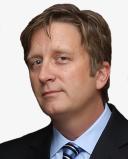Child Development
How Young Is Too Young?
Part 1: Prescribing Psychiatric Drugs—Infancy to Toddlerhood
Posted April 1, 2015
Do you remember feeling pressure as a child to do better at school, fit in socially, or behave more appropriately? Making the right decision was not always as easy as adults and cheerful children's books sometimes painted it. Luckily, stumbling slow motion through a decade or so of dysfunctional days (aka natural childhood development) was an expected and accepted part of growing up. Today's expectations and demands placed on children for Disney-like perfection, however, are exponentially greater and strangely different.

At an ever increasingly earlier age, we are expecting kids to behave years beyond one's developmental ability and maturation. For those who do not meet such expectations (e.g., See Dick Bite Jane), the consequences are futuristically surreal. The quip "take a pill" which was used figuratively not too long ago, now literally has become a daily mantra for millions of kids. So how young is too young to place such pressure and push psychiatric drugs on our youth?
Under Pressure
Despite life rarely providing a magic wand to fix anything quickly, parents are being told there is supposedly an easier more efficient way to get children to behave appropriately and improve academically. Instinctively, such promises of grandeur immediately sound off warning bells in our brains. We know that hard work and patience will be required regardless, but the temptation to possibly bypass a large amount of trials and tribulations is sometimes too hard to fight. Conventional parenting wisdom whispering "this too shall pass", is silenced.
As a result, many exhausted parents are accepting supposed claims that a serious mental disorder label combined with a magic pill is a safe alternative to help children with their developmental behavior challenges. Many see immediate changes in behavior but fail to read research that explains such "improvements" are the result of the child's brain being medicated to malfunction. Many dismiss a laundry list of dangerous side effects listed in the medication guides, and take the risk that suicidal ideation, permanent facial tics and more severe mental disorders won't be the case for their child.
Unfortunately, many also are unaware of or ignoring research which shows natural child development is a sequential and painfully slow gradual process. A process that cannot and should not be rushed. Decades of developmental theory and research confirm, and many grandparents will agree, kids have displayed the behaviors associated with today's most popular mental disorders for quite some time. And prior to a few decades ago, we rarely drugged them.
So take a big gulp of that triple gargantuan vanilla latte or monstrous 45-hour energy drink, because I am about to share an extended release dose of... cue the Barry White music... "oh yeah baby"... "mmmm-uhhhh"... "I can't get enough of "... child development theory!
Eight Million "Wrong", and Growing
In a recent blog, I wrote about the mind-bottling number of kids prescribed psychiatric drugs. More than eight million children, from infants to teenagers, are prescribed potentially life threatening pharmaceuticals for mental disorders such as ADHD, anxiety, bipolar and depression. The possibility exists, however, that a large percentage, in the prime of their developmental learning curves, are being labeled and drugged for displaying common developmental challenges.
As the brief summary of child development theory and research to follow illuminates, decades of sound theory-driven replicated studies document that such behaviors typically and naturally mellow with time as children progress through sequential stages, mature. Just because your child (when compared to others) possibly displays more frequent, stronger or longer mood swings related to anger, anxiety, depression, happiness or hyperactivity, it does not mean they will behave this way forever or such behavior is abnormal. In fact, expressions of anger typically increase in frequency and intensity from four months old into the second year (Braungart et al., 2010).
Displaying extreme behaviors is not necessarily a bad thing. Albert Einstein displayed anger issues throughout childhood and didn't speak until four or five years of age. In many cases, when these behaviors (e.g., argumentativeness, extroversion) are managed and harnessed by the child, they define one's unique individual personality type and future career skills. Such behaviors, when strategically complemented by more inspiring parenting and instruction, are what feed our artistic and creative talents, leadership abilities, and communicative proficiency. As many parents have learned, though rather frustrating in the early years, such behaviors were signs of giftedness and not a disorder.
Of course, these somewhat bothersome behaviors can be extremely frustrating. Common childhood challenges are quite capable of driving the vast majority of us parents and educators across the border to Bonkersville. There is no doubt that many parents and educators need more support and possibly training. Some children truly do need mental health therapy for maladaptive levels of such behaviors possibly related to issues such as trauma. But semi-annoying behaviors which once were accepted as part of childhood and parenthood, are now feeding a billion dollar child-focused appendage of the pharmaceutical industry.
Too Soon?
From the attention given to my latest blog on this mind-bottling movement to drug kids (Thank you for sharing, BTW!), I guess the astronomical number of children on psychiatric drugs also left many others with a similar chronic case of cognitive dissonance and numerophobia. Personally, my mind was blown when I read that 509,891 children three or younger are on anti-anxiety pills. Apparently most troubling to many adults is that more than a million of these eight million plus kids are five or younger, and 274,804 are a year old or less. When it comes to accepting such practices to drug kids for mental disorders, many seem to draw the line at around 3 years of age and even more are appalled when it comes to drugging infants.
I am a parent of two wonderful yet highly over energetic and opinionated children, who let's say often display unpredictable levels of neuroticism. As a psychologist who teaches child development, I truly cannot fathom how we actually have reached this point of drugging more than eight million kids. Besides the billions of dollars put annually into marketing these drugs, which is not even proportionately close to their investments researching the safety or long term effects of the drugs, how have so many, so young, become repeat customers to those with a license to pill? Common sense and non-pharmaceutical funded scientific research on the natural child development process can provide a much better explanation for the behaviors too often used as symptoms to justify a mental health diagnosis and drug kids.
For example, Jean Piaget's theory of cognitive development categorizes the first stages spanning infancy and toddlerhood as Sensorimotor and Preoperational. Piaget's research shows that during this time kids think by acting on the world with their eyes, ears, hands and mouth. During these early stages of critical development where minimal logic is applied to decision making, kids are trying to use limited symbols, not even words necessarily, to solve problems. According to Menyuk, Liebergott and Schultz, a five-month lag exists between the time toddlers typically comprehend 50 words (around 13 months) and the time they produce as many words (around 18 months). How can an ethical doctor even legitimize drugging a child who has not learned to complete a sentence?
Lawrence Kohlberg's moral development theory calls this period a time of preconventional morality. Kids at this stage typically only make moral decisions as a means to avoid punishment or exchange favors to get what they want. As Albert Bandura's social learning theory shows us, infants and toddlers are often left to just imitate and model the behaviors of others they have witnessed. From a somewhat more unusual perspective, according to Sigmund Freud such kids are only interested in sucking on breasts and bottles, holding and releasing urine and feces, and seeking pleasure through genital stimulation. He called these stages oral, anal and phallic. As they say down south, "bless his heart."
The point is that infants and toddlers are not yet at the operational stage to grasp the conventional behaviors society desires and expects. There are many more theories that can be applied to better explaining why kids act like kids. These theories provide a lens to view what kids are thinking about, where they are coming from. Kids from infancy to toddlerhood are not that focused on what some adults wish they were focused on. Instead of showing they have mastered acceptable behavior, they are experimenting everyday and stumbling slowly through this thing we call life.
It's a Wild, Neuronic Ride
As many parents will attest, the ups and downs of childhood development are similar to a rollercoaster. When it comes to infancy and toddlerhood, this is the early portion of the ride where one is coming out of the steepest incline screaming like a small child and corkscrewing uncontrollably toward nausea at warp speed. As theorists have suggested for more than a century and today's neuroscience confirms, the first few years of life are when our children's brains are developing faster than we will ever see again.
Supporting this early childhood cognitive and emotional development is essential to constructing the foundational building blocks needed to program billions of neurons. Feeding these neurons with nutrition, structure, love and diverse sensory is critical to helping children learn to build on their knowledge and behave appropriately for years to come. Not providing these essential ingredients can lead to critical neurons being pruned from their brains, and thus resulting in temporary or possibly permanent developmental delays. Assuming that a mind-altering pill, which is hypothesized to unnaturally manage a supposed imbalance of neurochemicals, can aid in such natural development and increase rational behavior, just seems shortsighted at best.
We have all seen infants and toddlers behave in ways that society frowns upon and heard them scream at migraine-inducing levels. As nearly every book on child development will concur, temper tantrums, lack of moral compass, and being distracted by every miniscule piece of sensory input that touches one of their five senses, are just a few behaviors reflecting the cognitive and emotional challenges of infancy and toddlerhood. Nearly every day in the life of all infants and toddlers includes numerous moments of inattention, hyperactivity, anxiety, and mini-manic episodes of happiness, depression and anger.
Instantaneously they can go from delighted to anxiety-ridden when a toy is taken away. Screaming, crying and displaying other slightly bothersome behaviors are what they have seen others do at daycare. It's what has worked to get parents to their crib-side or feed them for months on end. When we see children repetitively react in certain ways that might seem less than appropriate or troublesome, we must understand these actions are just a tiny part of the arduous time travel experiment we call child development.
Numerous studies (e.g., Thomas, Chess & Birch, 1956; Watson & Raynor, 1920) have shown how environment is the supreme force in development and how adults can mold children's behavior without the use of pharmaceuticals. Beyond the drugs being administered to the mouths of babes, however, we also need to seriously reconsider if even a small percentage of the millions of children who are four to seventeen should be prescribed such drugs that come with far too many unknowns. I will expand more on the four to seventeen age group in the next part of this blog series.
Copyright © 2015 by Michael W. Corrigan, Ed.D.
My most recent book, Debunking ADHD: 10 Reasons to Stop Drugging Kids for Acting Like Kids, goes deeper into child development as well as alternatives to medication.

References
Berk, L. E., & Meyers, A. B. (2016). Infants, Children, and Adolescents (8th ed.), New York: Pearson.
Braungart-Rieker, J.M., Hill, A.L., & Karrass, J. (2010). Fear and Anger Reactivity Trajectories From 4 to 16 Months: The Effects of Temperament, Regulation, and Maternal Sensitivity, Developmental Psychology, 46, 791-804.
Corrigan, M. W. (March, 2014). Debunking ADHD: 10 Reasons to Stop Drugging Kids for Acting Like Kids, NewYork: Rowman and Littlefield
Menyuk, P., Liebergott, J., & Schultz, M. (1995). Early language development in full-term and premature infants. Hillsdale, N.J: Lawrence Erlbaum Associates.
Santrock, J. W. (2016). Essentials of Life-Span Development (4th ed.), New York: McGrawHill.




